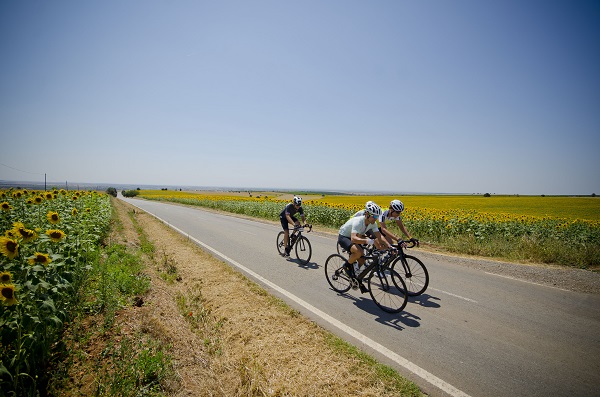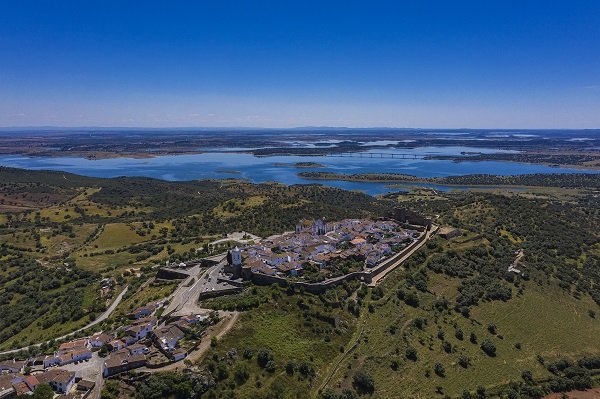The media is all a buzz about the new "Big Trip:” Years of pent up desire to travel are leading to new ideas of a grand tour. But what does that mean? Obviously different things for different people. But, in the brave new world of travel — it can mean hitting the big sites, or taking things off your bucket list. People seek unique experiences, new ways to learn and explore.
For many that experiential travel plan puts Portugal on the list — and at the top of the Portugal list will be Lisbon. And why not, Lisbon is a truly wonderful city, set above the Tejo River. Many will head to the charming city of Porto and the Douro River Valley, others to the warm beaches of the Algarve. Well, the nature of bucket lists has changed. Expedia calls 2022 the year of the G.O.A.T., or the "greatest of all trips.” People want to go big, but not fall into a hackneyed routine. In fact, many travelers are saying that they want to avoid crowds, teeming cities, and long lines. Travel is as real as it comes, and slow travel is not a trend - but a way of being.
So what if you want to see the "real” Portugal? Experience a place that is both authentic, but offers a wide variety of places to stay, from rural luxe, to castles, to quaint inns set in small towns, or on the long Atlantic coast. And has a host of experiences from wine and olive oil marking, to cooking, to birding, to pottery, to living on a houseboat.
If that sounds good, then put the Alentejo on your bucket list: Just an hour from Lisbon, the Alentejo has no big cities but is made up of small fortified towns with low, whitewashed houses and narrow cobblestone streets, where the traditional crafts and food are the experience: Imagine cork forests, vineyards and fields of sunflowers.


The Alentejo has been on many people’s lists, from the Romans, Arabs, Phoenicians and Celts. Each of these ancient peoples came to the Alentejo – and each left a lasting imprint. But the story does not end there. With the birth of the Portuguese nation in the 12th century, the Alentejo became a country within a country — with its own arts, pottery, rugs, songs, styles, cuisine, way of seeing life and way of speaking. It is a place of poets, captains, builders, farmers, artists and ranchers — the cultural past of the Alentejo is alive and vibrant.
From the times we are in, the pace of life is different here, and the landscapes, beaches and people make it unlike any other place. The feeling starts when driving along the rural roads, surrounded by groves of cork oaks, olive trees and vineyards. On the western coastline, surfing is popular on sandy beaches. The coastline is preserved as a natural park — with breathtaking Atlantic beaches and small fishing towns such as Zambujeira do Mar, Porto Covo, and Vila Nova de Milfontes. Look for sandy bluffs, great hikes, forts and great beaches. In the East, there are ancient fortified towns waiting to be explored. Unlike most areas of Portugal, the Alentejo is mostly flat. And this is helpful because there’s no better way of exploring the region than with a bicycle. There’s a list of cycling trails you can do from north to South, East to West with beautiful stopovers in towns with their own charm, or in small farms with sheep and pigs living under the cork and olive trees.
Few places have the mix of history, and food that you find in Évora, a World Heritage City, still thriving in its ancient city walls. The grand Giraldo Square gives way to tiny streets, full of outdoor eateries — and ice cream and pastry shops. Places like Estremoz or Monsaraz will also let you travel in time inside their walls.
The food of the Alentejo is 100% local too— with dishes of bread, olive oil, fish and pork that you won’t find anywhere in Portugal. Traditional Alentejo cuisine is based on the local crops. On the coast the fish is as fresh as can be — as are the crabs, goose barnacles, and clams.
Lastly, any new bucket list destination has to have unique experiences — and the Alentejo has that. You can visit farms and learn firsthand how the cheese, wine, and olive oil is made. There are pottery towns such as Corval and Redondo where pottery shops welcome the guests, and you can see potters at work. Many small towns have a host of local artisans, as is the case in Évoramonte, where weavers and potters work right next door to each other.
Romans, Moors, Greeks, Carthaginians have all been drawn to these landscapes and beauty. Discovering the traditional cuisine and delicacies as simple as dipping bread in our distinct local olive oil, sampling the wines and exploring the rolling plains, natural reserves and more than 85 miles of coastline. You can get out and hike the Atlantic trails of the Costa Vicentina, or follow the local Caminos de Santiago. Not to forget birding, cycling, and exploring the cork forest-you can even take a cooking lesson, or explore a royal palace. But do it all on your time, at your own pace — under the night sky of the Alentejo.
So start planning, and find yourself in the Alentejo.



